The most beautiful dives in the world
Published on December 17, 2024
Unconditional scuba diving enthusiast? Are you looking for the most beautiful diving destinations in the world? The Quotatrip team has found for you the best diving trips to enjoy the most beautiful seabeds on the planet. You will find several styles of diving: wrecks, unusual, cruises, crystal clear water, full of colors and emotions, for beginner and experienced divers.
-
Egypt and the SS Thistlegorm wreck
The paradise of wrecks
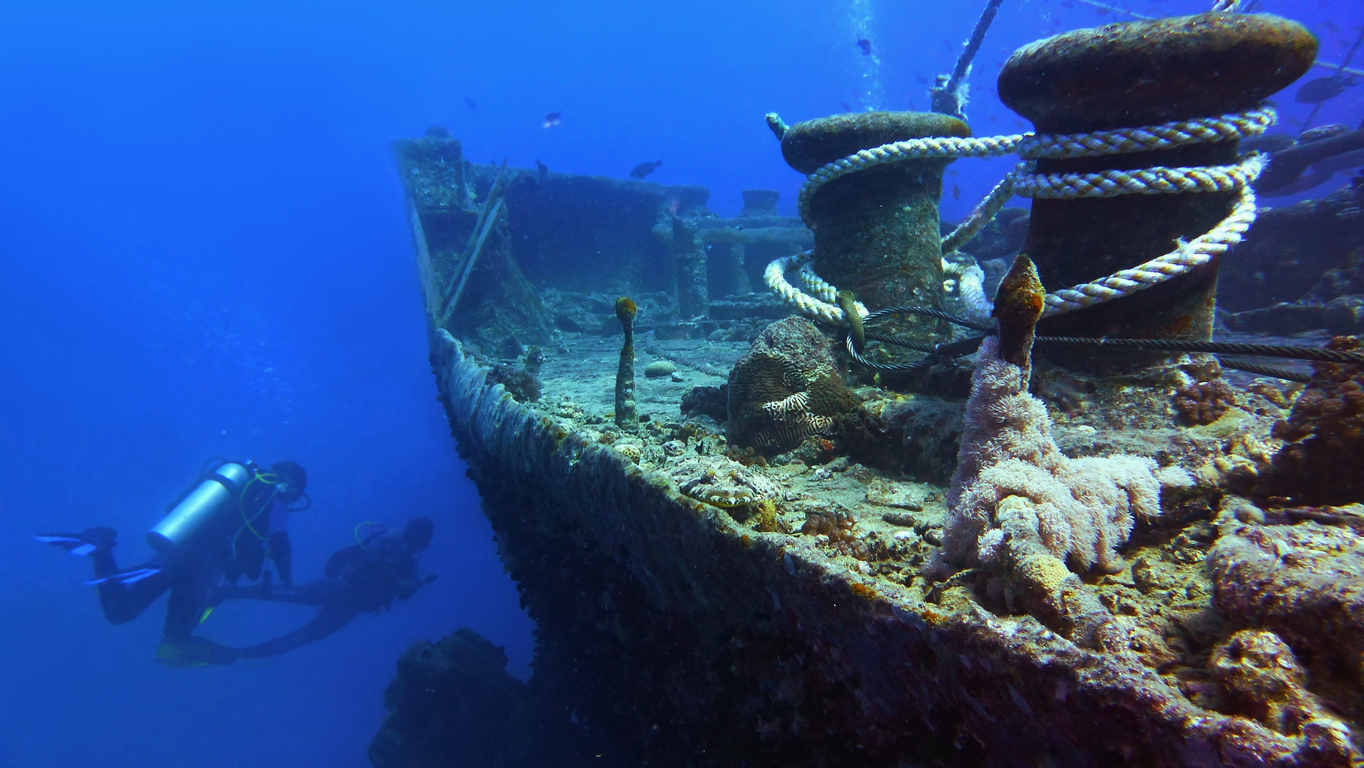
If you are passionate about History or love underwater photography, this dive is made for you. Indeed, the wreck of the SS Thistlegorm will take you on a real journey into the past. This British Navy cargo ship, measuring 131 meters long, was bombed by the Germans on June 6, 1941, during World War II. It was later discovered by Commander Cousteau in 1952. During the dive, you will be amazed as the objects are extremely well preserved: crates of rifles, shells, locomotives, tanks, motorcycles, and many more, but we will leave you some surprises.
Depth: 30m
Best period: March – November
Practical tip: level 2 required, ideal for a diving cruise
Request a free quote from our local agencies
Baa Atoll in the Maldives
The postcard dive
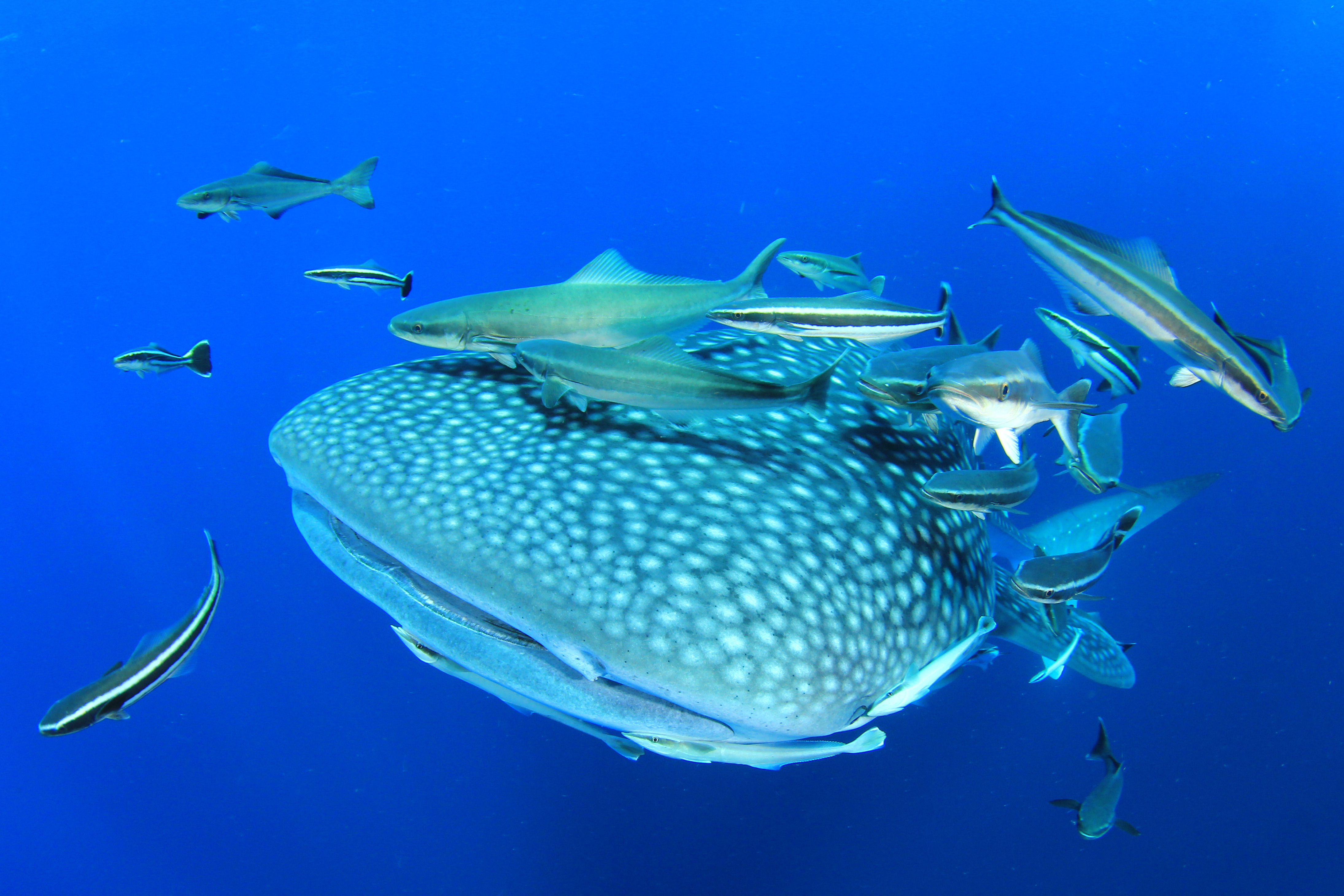
Located northwest of Malé, Baa Atoll has been classified as a UNESCO biosphere reserve since 2011. It is the most famous atoll in the Maldives among divers. It is also considered the most beautiful atoll in the Maldives, worthy of postcards. Its crystal-clear water, warm water temperature, and proximity to the coral reef will allow you to enjoy exceptional dives. Notably, with its breathtaking underwater diversity where fauna and flora are abundant, as well as the many colorful corals and reefs. In the Maldives, you can dive both day and night.
Fauna: dolphins, turtles, manta rays, whale sharks, blacktip sharks, stonefish, bivalves, moray eels, groupers…
Flora: acropora, anemones, sponges…
Best period: January – April
Spots:
- 12.5 Thila (15-25m)
- Neliwaru Thila (30m)
- Muthaafushi Caves and Thila (7-40m)
Request a free quote from our local agencies
Belize Barrier Reef
Ali Baba's cave
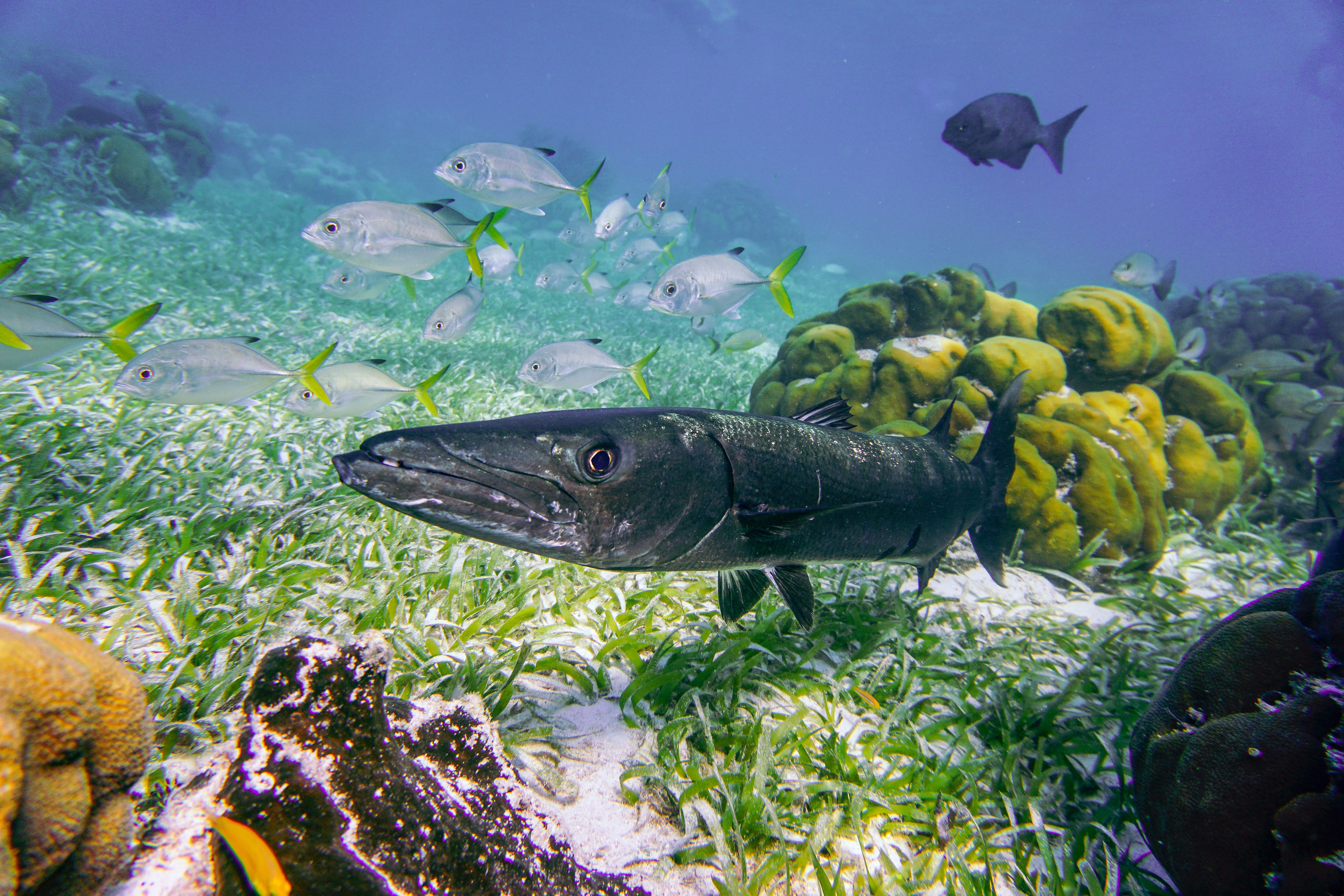
Belize has the second largest barrier reef in the world, 300 km long. Seven of its sites have been listed as UNESCO World Heritage since 1996. In Belize, you will undoubtedly experience dives rich in colors and emotions: drop-offs, cavities, canyons and caves, more than 500 species of fish and 100 species of corals. With its incredible limestone sinkhole "the Great Blue Hole" (300m in diameter and 124m deep), you will be hypnotized. Seen from the sky, the Great Blue Hole of Belize is impressive, but from the inside, it is Ali Baba's cave for divers.
Fauna: reef sharks, leopard rays, hammerhead sharks, manatees, schools of jacks, blacktip and hammerhead sharks
Flora: staghorn corals, Neptune's brains…
Best period: November – May
Spots:
- Turneffe Atoll Reef
- Lighthouse Reef
- Half Moon Caves
- Great Blue Hole
Practical tip: the ideal is to take a cruise to make the most of it, as the sites are rather far from the coast.
Request a free quote from our local agencies
The island of Sipadan in Malaysia
The famous one
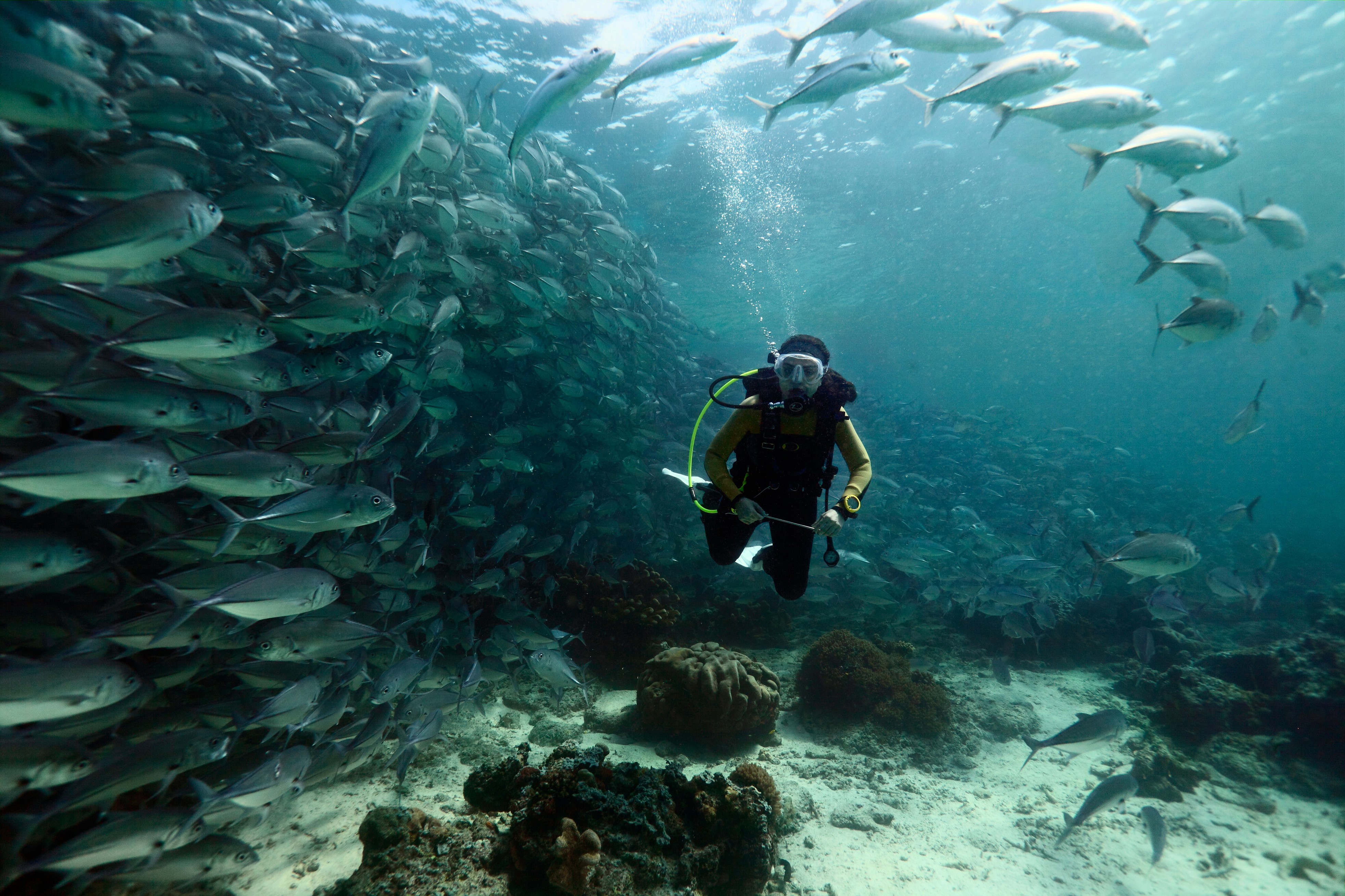
Located 45 minutes from the coast in the Borneo area of Malaysia, Sipadan Island is renowned for its great biodiversity, with one of the richest seabeds in the world. In total, more than 3000 species of fish, hundreds of corals, superb reefs and many dive spots. Most of these dives take place at less than 20 meters deep.
Fauna: barracudas, jacks, tunas, turtles, whitetip sharks, grey, hammerhead and whale sharks, angelfish, triggerfish, moray eels, manta and eagle rays, humphead parrotfish…
Best period: April – October
Best spots:
- Barracuda Point (5-40m) strong current
- Turtle Tomb (17-23m)
- Turtle Cave (22m)
Practical tip: diving between 6am and 2pm, no night or sunset dives. Daily diver quota to preserve the site, you must book early, only 120 permits per day are issued.
Request a free quote from our local agencies
Rangiroa in Polynesia
Commander Cousteau's discovery
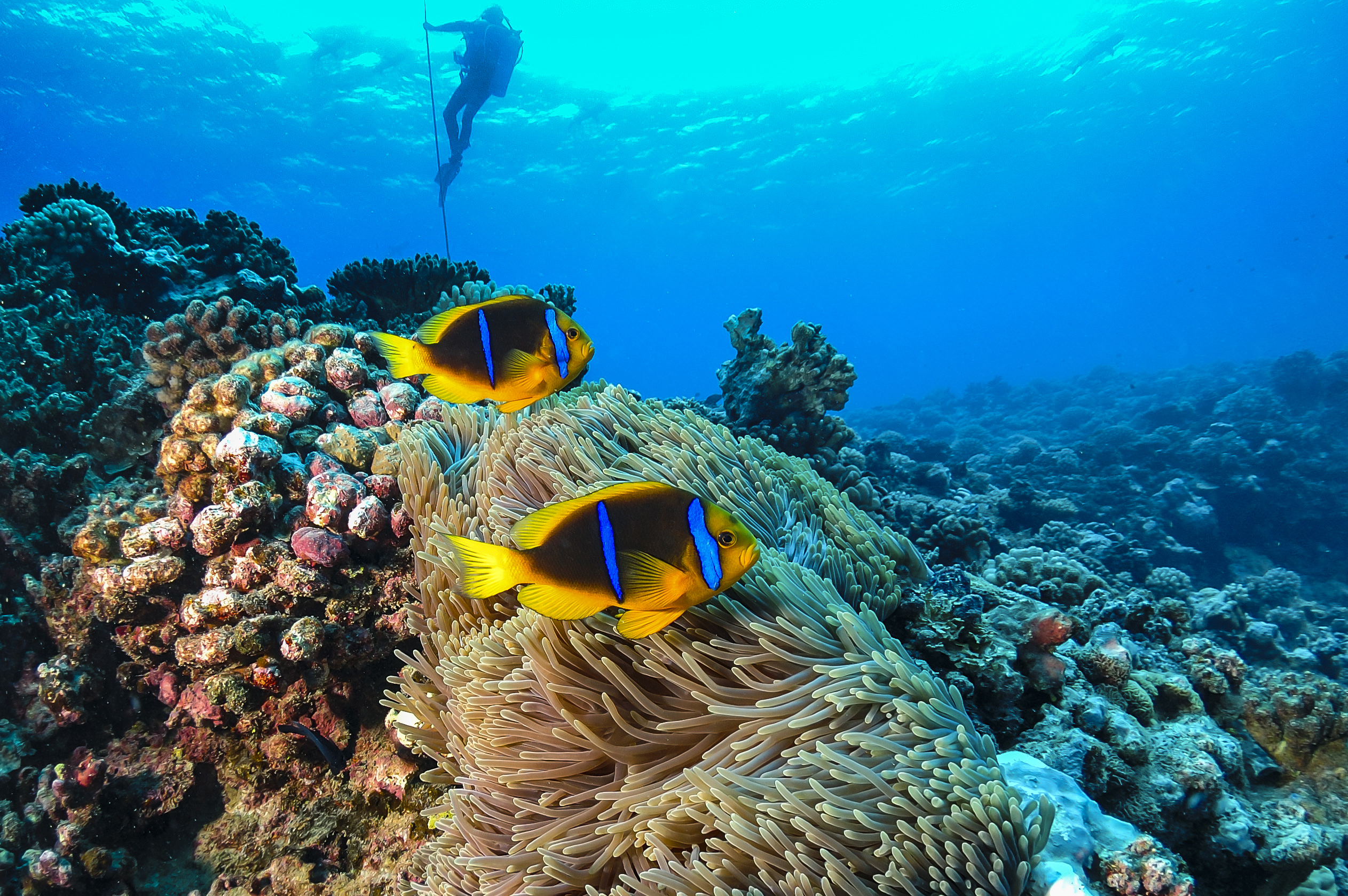
Rangiroa is the largest atoll in French Polynesia and the second largest in the world. Commander Cousteau classified this atoll as the most beautiful and richest in underwater fauna and flora. Known by divers for its remarkable visibility and dense biodiversity. Its plus? It is not overrun by tourists.
Fauna: bottlenose dolphins, grey and hammerhead sharks, manta rays, paddle snappers, napoleon wrasse, sailfish…
Best period: March - October
Spots:
- Avatoru Pass (15-20m)
- Tiputa Pass (15-20m)
- Tiputa Canyons
Request a free quote from our local agencies
Komodo in Indonesia
The most beautiful dive in Asia
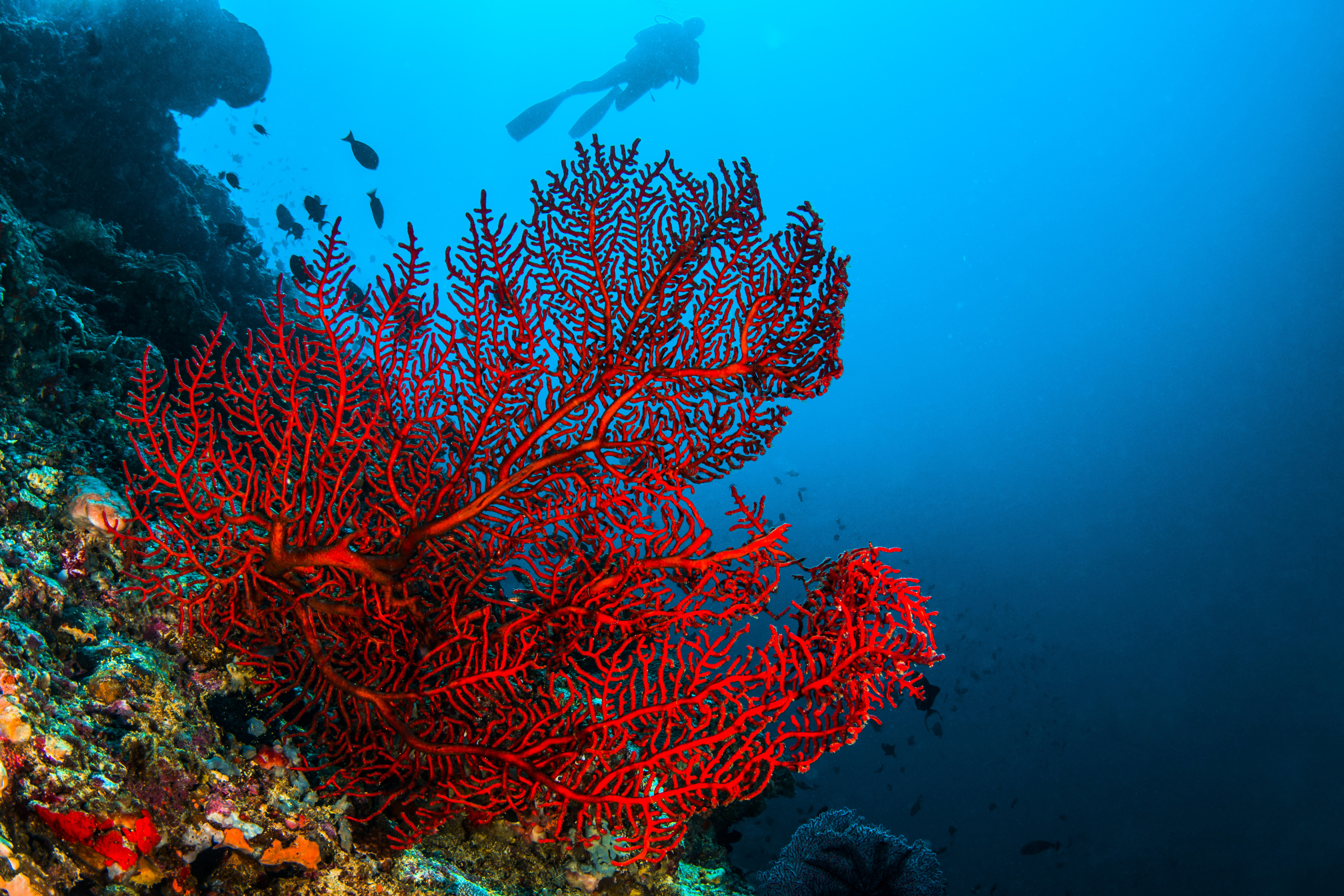
Komodo is an island in the south-central Indonesian archipelago. It is considered one of the most beautiful dives in the world. The mix between the Indian Ocean and the Pacific Ocean, as well as the strong and rich currents, offers a rather exceptional mix of biodiversity: a true paradise for divers wanting to be amazed. It is also known for its famous Komodo dragons and of course for its many world-class dive sites.
Fauna: grey sharks, whitetip, blacktip allies, tunas, jacks, pygmy seahorses, manta rays, hammerhead sharks…
Flora: varieties of sponges, gorgonians, cnidarians, anemones, whips, hard and soft corals…
Best period: April-September
Spots:
- Manta Alley (10-30m)
- Yellow Wall
- Batu Bolong (25-35m)
- Castle Rock (4-24m)
Practical tip: the sites are far from the coast, to make the most of the seabed, choose the cruise option on "liveaboard" traditional wooden boats.
Request a free quote from our local agencies
Central Islands of the Galapagos
The Darwin Islands
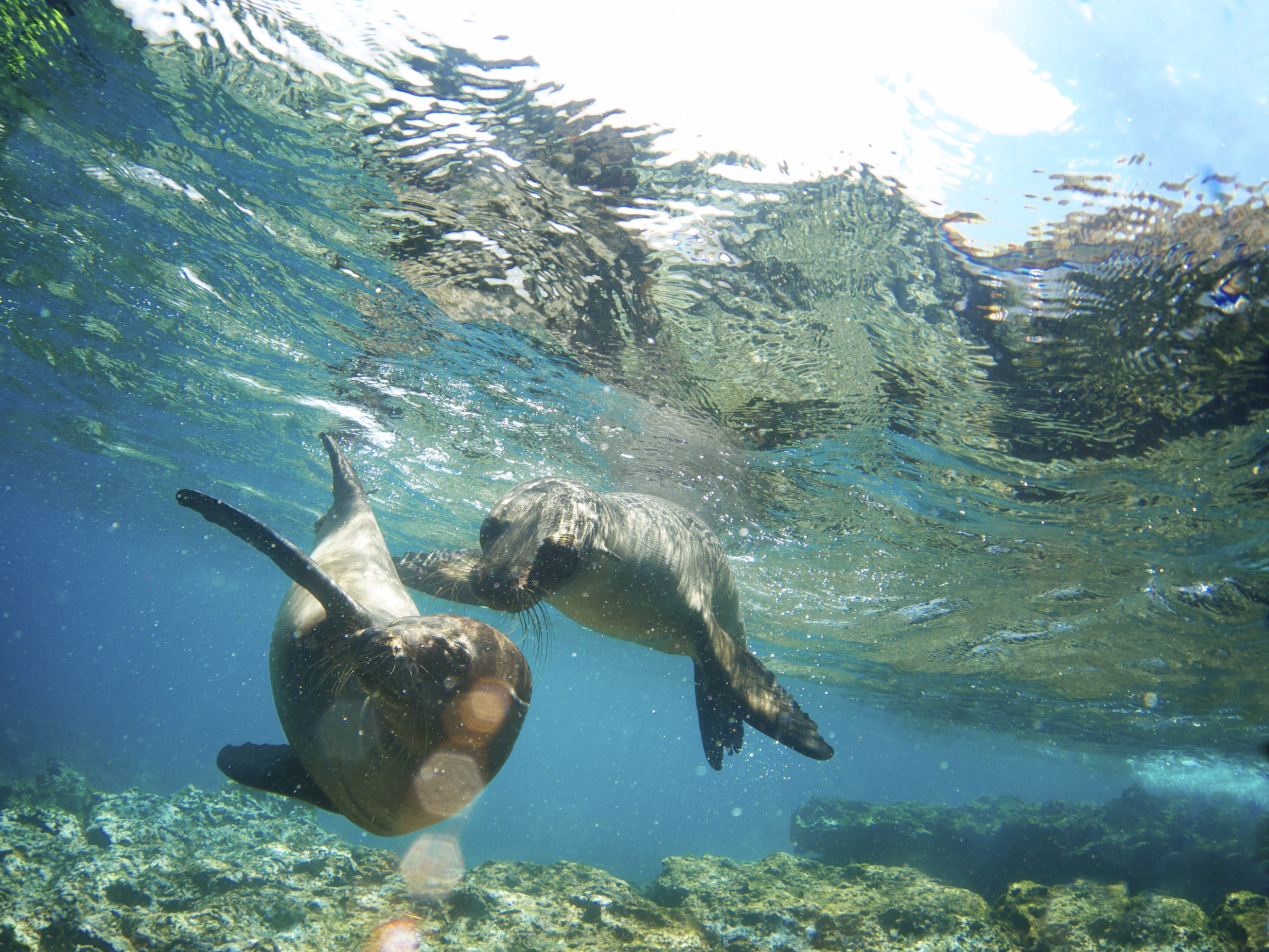
The Galapagos Islands archipelago is a national park listed as a UNESCO World Heritage site. Its seismic activities, isolation and strong currents have made it a true underwater reserve. On land as in the water, you will discover ever more amazing species, such as Galapagos tortoises and marine iguanas. They are also known for being the research site of Charles Darwin's famous theory of evolution.
Fauna: whale sharks, spotted rays, schools of hammerhead sharks, sea lions, angelfish, whales…
Best period: all year round
Spots:
- Wolf Island
- Darwin’s Arch
Practical tip: the ideal is to take a cruise to enjoy the seabeds.
Request a free quote from our local agencies
The Sardine Run in South Africa
An unusual dive
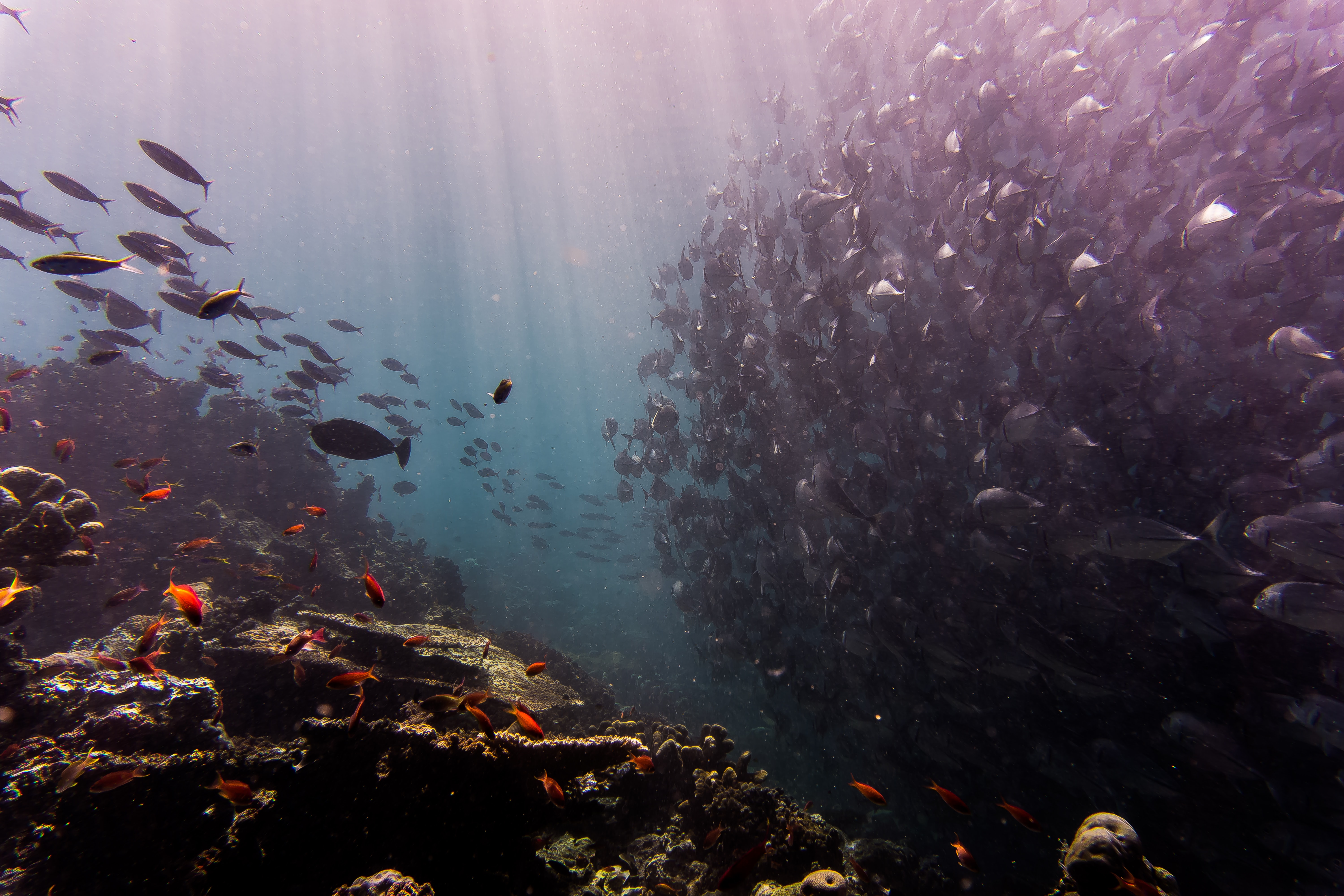
The Sardine Run is an unusual diving experience. It is the migration of sardines along the coasts of South Africa. This phenomenon takes place every year, between June and July. Schools of sardines, by the millions, follow the cold water currents and bring along their predators: copper sharks, bull sharks, blacktips, tigers and great whites will be there. With a bit of luck, dolphins, orcas, Bryde's whales will also join the party. On the surface, cormorants will have a field day.
Fauna: common dolphins, gannets, Cape fur seals, Bryde's whales, blacktip sharks, dusky sharks, humpback whales, penguins for the lucky ones.
Best period: June-July
Spots:
- Cape Town
- Port Elizabeth
- Port St Johns
- Durban
Practical tip: this dive is for experienced divers
Request a free quote from our local agencies
Mauritius – Flic en Flac
Exceptional visibility
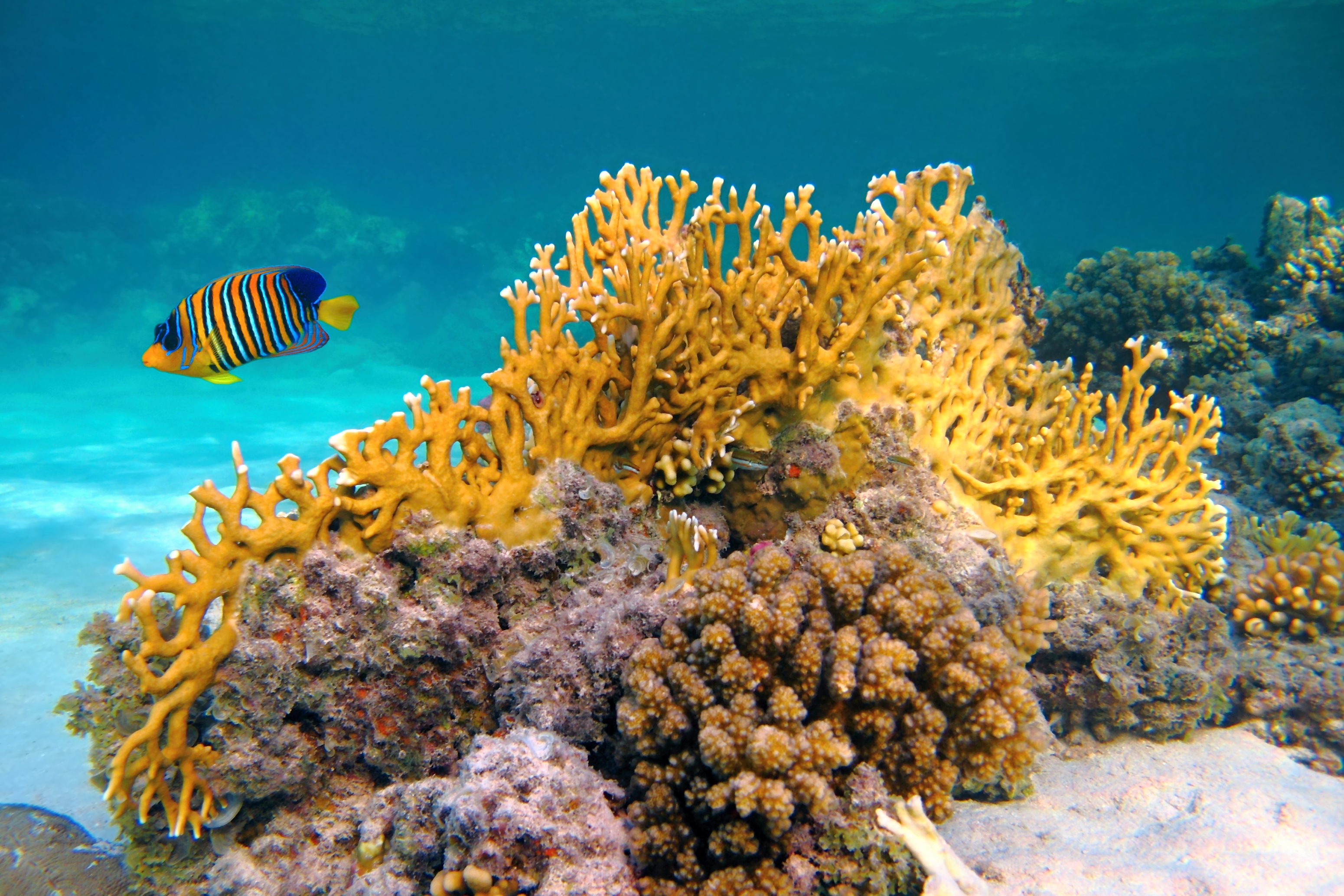
Located on the west coast of Mauritius, Flic en Flac is the part of the island least exposed to wind, which allows for diving and optimal visibility all year round. The dives on the Flic en Flac side are accessible to both beginner and experienced divers. You can do several types of dives: canyons, wrecks, arches, underwater caves… and see magnificent coral species.
Fauna: lionfish, soldierfish, catfish, schools of jacks, mimic fish, flashlight fish or even beds of eels!
Flora: acropora, brain coral, black coral, bubble coral, acroporas, anemones
Best period: all year round, but the best season is between November and May.
Spots:
- Cathedral (18-30m) level 2
- Tug II Wreck (20m) beginner
- Le Park (30-40m)
- Rempart Serpent (26m) level 2
Practical tip: dives are done behind the coral reef, 15 minutes by boat.
Request a free quote from our local agencies
Mexico: The cenotes
The atypical dive
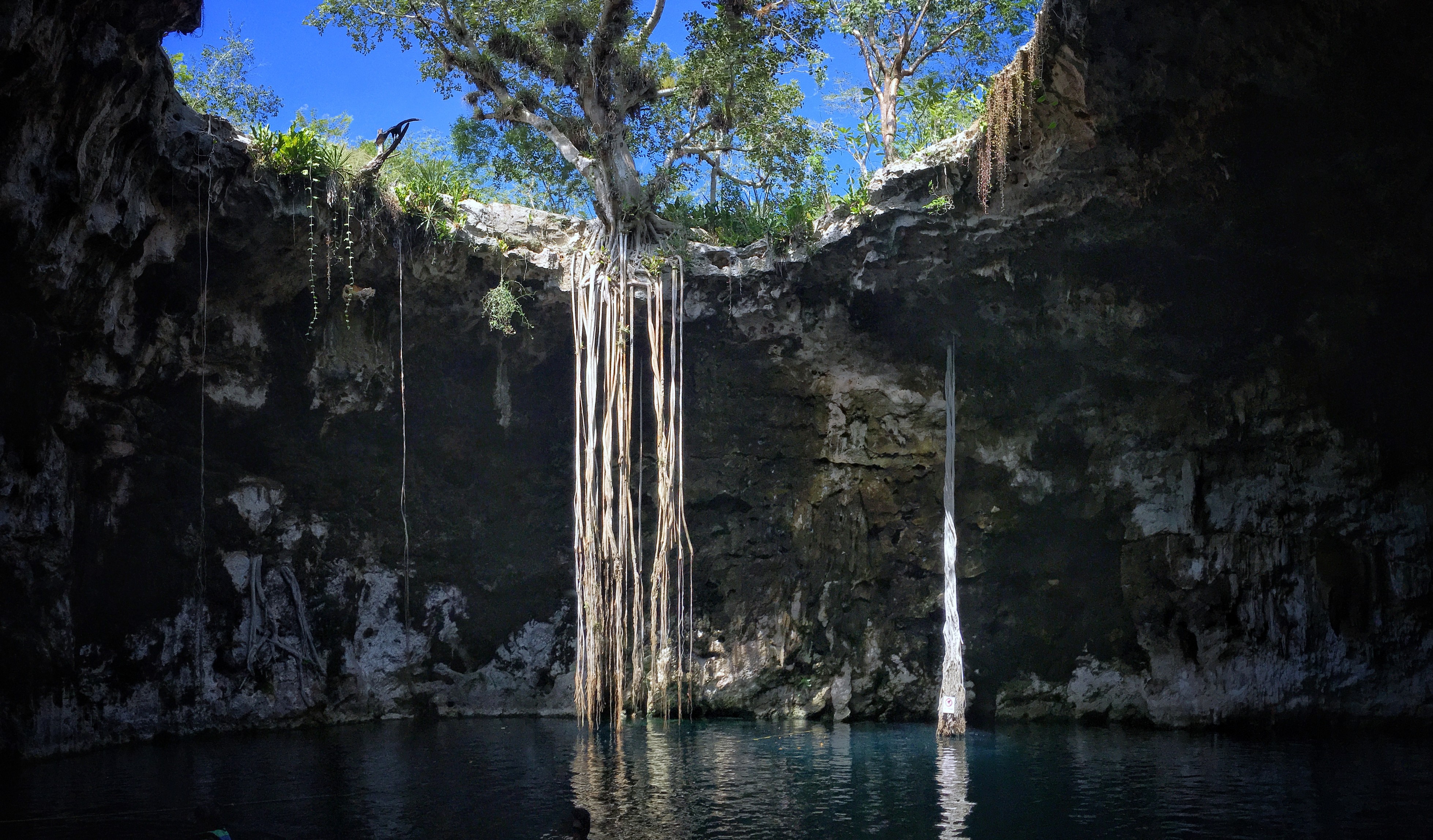
The cenotes are mythical places in Mexico, especially in the Yucatan region. These are natural freshwater wells or caves caused by the collapse of limestone rock. The depth of the cenotes varies from 10 to 40 meters. Diving in cenotes also means diving in crystal-clear waters with a temperature around 25° and discovering archaeological remains, rivers or underwater tunnels. An atypical experience you won't soon forget.
Best period: February – June
Cenotes:
- Chac Mool (all levels)
- Dos Ojos (all levels)
- Angelita (advanced diver)
- Zapote (advanced diver)
Practical tip: equip yourself with a light source. If you are looking for a dive focused on fauna and flora, this dive is not for you.
Request a free quote from our local agencies
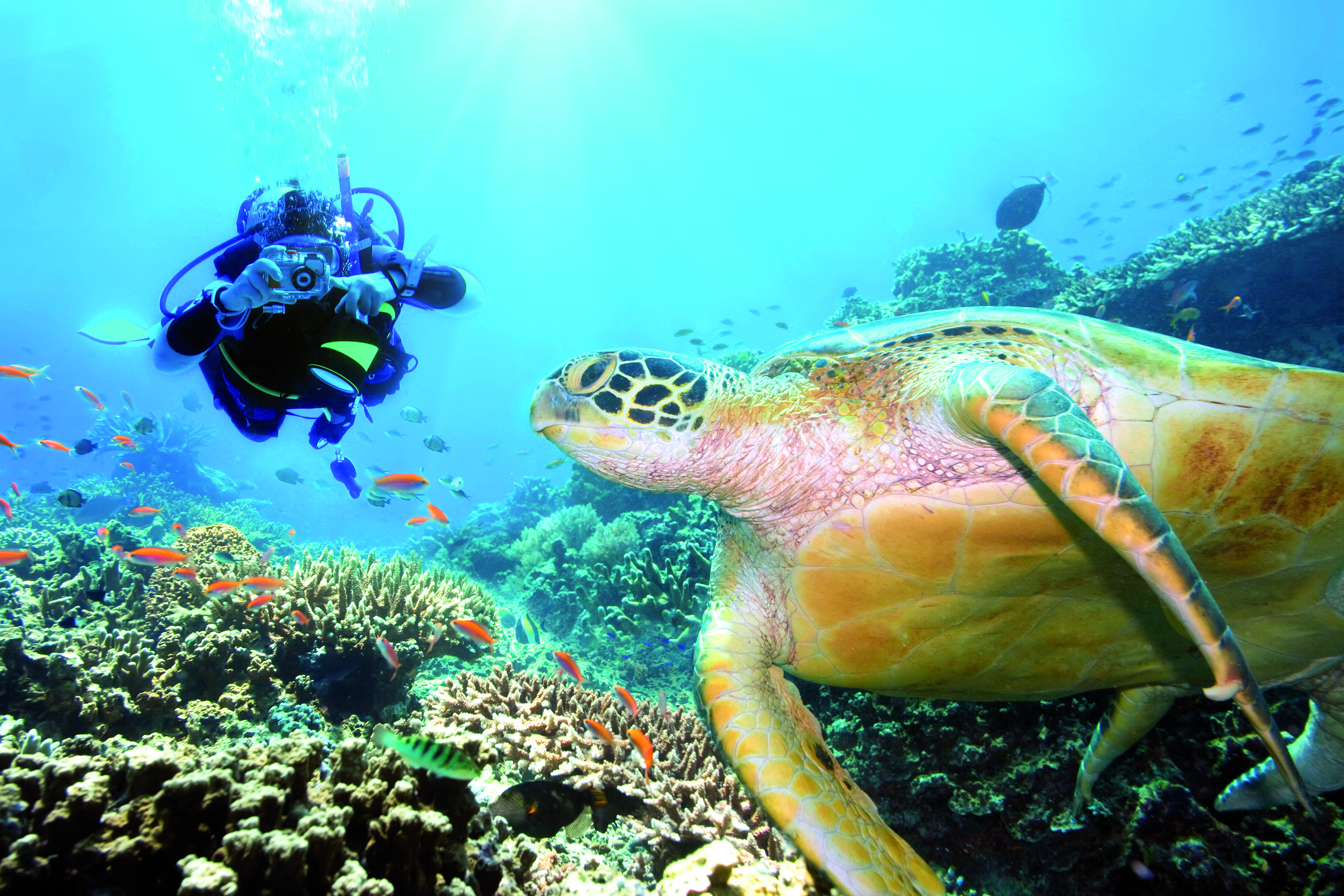
A website by
Customize your trips with Quotatrip and receive tailor-made offers directly in your inbox.
Discover a country